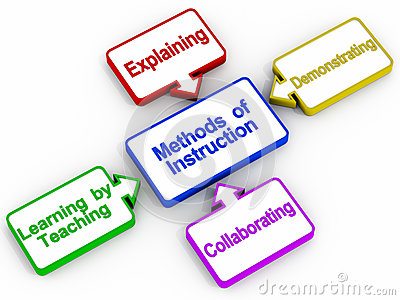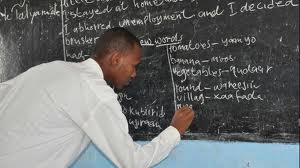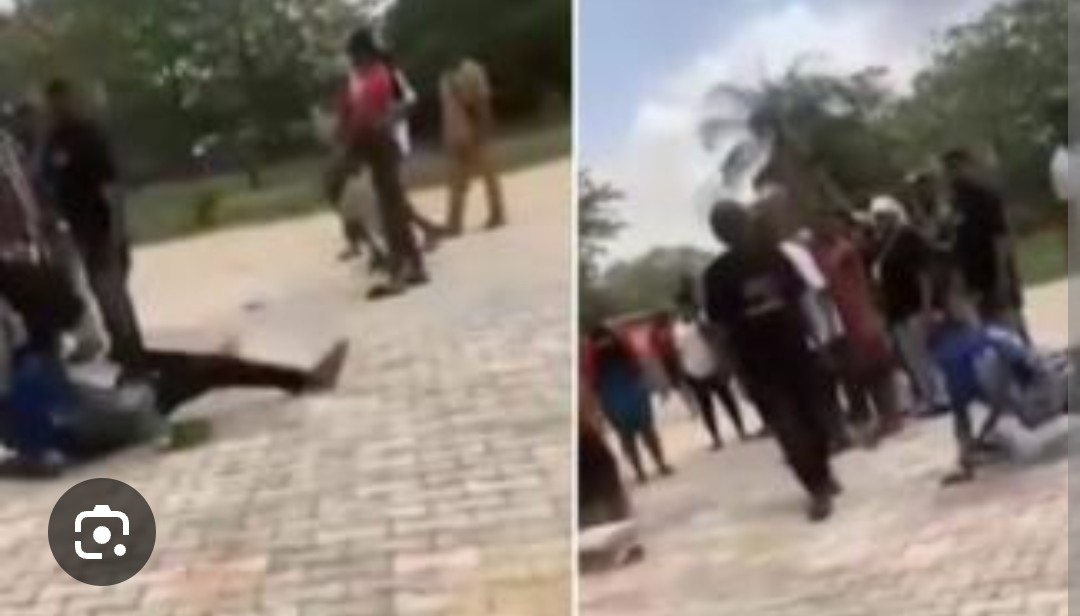Teaching methodologies/style was supposed to be part of my course online in particular course last semester. But this was never taught to us as a result of the ASUU strike that kept us at home for six good months. Oh! Is a Nigeria malady. Eyah! Is only in my country that in a whole semester you’ll not see a lecturer but at the end of the semester, you are writing examination in a course he teaches. In the other hand, he is embarking on strike for your sake. Is only in my country, that a university’s senate will vow never to award a degree with pass yet her lecturers still maintain A-grade belongs to God, B-grade to themselves, C-grade to the most serious students and D-F-grade to others. And in the words of Gordons (Nigerian comedian), the ministry is moving.
The lecturer of this course is a ‘kind heart’ lecturer. He knew there was a compulsory question on the above topic; he gave all of us assignment to write a term paper on four core method in teaching Social Studies to pre-schoolers.
This left me confused. Just four teaching methods? I am a ‘new’ teacher. I teach some ACCA fundamental courses, computer engineering, advance social media marketing strategy, photography, reading and writing to adults, early childhood education, ethics and etiquette, eMarketing modules and strategies. So many right? Yea, I have met so many clients with varied learning traits and individual differences. As a result I have developed plethora methodologies to meet their learning styles. I have a total of 150 documented teaching methods. I feel to share them here for the sake of other teachers, teachers in training and trainers. Find them below.
- Lecture by teacher (and what else can you do!)
- Class discussion conducted by teacher (and what else!)
- Recitation oral questions by teacher answered orally by students (then what!)
- Discussion groups conducted by selected student chairpersons (yes, and what else!)
- Lecture-demonstration by teacher (and then what 145 other techniques!)
- Lecture-demonstration by another instructor(s) from a special field (guest speaker)
- Presentation by a panel of instructors or students
- Presentations by student panels from the class: class invited to participate
- Student reports by individuals
- Student-group reports by committees from the class
- Debate (informal) on current issues by students from class
- Class discussions conducted by a student or student committee
- Forums
- Bulletin boards
- Small groups such as task oriented, discussion, Socratic
- Choral speaking
- Collecting
- Textbook assignments
- Reading assignments in journals, monographs, etc.
- Reading assignments in supplementary books
- Assignment to outline portions of the textbook
- Assignment to outline certain supplementary readings
- Debates (formal)
- Crossword puzzles
- Cooking foods of places studied
- Construction of vocabulary lists
- Vocabulary drills
- Diaries
- Dances of places or periods studied
- Construction of summaries by students
- Dressing dolls
- Required term paper
- Panel discussion
- Biographical reports given by students
- Reports on published research studies and experiments by students
- Library research on topics or problems
- Written book reports by students
- Flags
- Jigsaw puzzle maps
- Hall of Fame by topic or era (military or political leaders, heroes)
- Flannel boards
- Use of pretest
- Gaming and simulation
- Flash cards
- Flowcharts
- Interviews
- Maps, transparencies, globes
- Mobiles
- Audio-tutorial lessons (individualized instruction)
- Models
- Music
- Field trips
- Drama, role playing
- Open textbook study
- Committee projects–small groups
- Notebook
- Murals and montages
- Class projects
- Individual projects
- Quizdown gaming
- Modeling in various media
- Pen pals
- Photographs
- Laboratory experiments performed by more than two students working together
- Use of dramatization, skits, plays
- Student construction of diagrams, charts, or graphs
- Making of posters by students
- Students drawing pictures or cartoons vividly portray principles or facts
- Problem solving or case studies
- Puppets
- Use of chalkboard by instructor as aid in teaching
- Use of diagrams, tables, graphs, and charts by instructor in teaching
- Use of exhibits and displays by instructor
- Reproductions
- Construction of exhibits and displays by students
- Use of slides
- Use of filmstrips
- Use of motion pictures, educational films, videotapes
- Use of theater motion pictures
- Use of recordings
- Use of radio programs
- Use of television
- Role playing
- Sand tables
- School affiliations
- Verbal illustrations: use of anecdotes and parables to illustrate
- Service projects
- Stamps, coins, and other hobbies
- Use of community or local resources
- Story telling
- Surveys
- Tutorial: students assigned to other students for assistance, peer teaching
- Coaching: special assistance provided for students having difficulty in the course
- Oral reports
- Word association activity
- Workbooks
- Using case studies reported in literature to illustrate psychological principles and facts
- Construction of scrapbooks
- Applying simple statistical techniques to class data
100. Time lines
101. Group dynamics” techniques
102. Units of instruction organized by topics
103. Non directive techniques applied to the classroom
104. Supervised study during class period
105. Use of sociometric text to make sociometric analysis of class
106. Use of technology and instructional resources
107. Open textbook tests, take home tests
108. Put idea into picture
109. Write a caption for chart, picture, or cartoon
110. Reading aloud
111. Differentiated assignment and homework
112. Telling about a trip
113. Mock convention
114. Filling out forms (income tax, checks)
115. Prepare editorial for school paper
116. Attend council meeting, school board meeting
117. Exchanging “things”
118. Making announcements
119. Taking part (community elections)
120. Playing music from other countries or times
121. Studying local history
122. Compile list of older citizens as resource people
123. Students from abroad (exchange students)
124. Obtain free and low cost materials
125. Collect old magazines
126. Collect colored slides
127. Visit an “ethnic” restaurant
128. Specialize in one country
129. Follow a world leader (in the media)
130. Visit an employment agency
131. Start a campaign
132. Conduct a series
133. Investigate a life
134. Assist an immigrant
135. Volunteer (tutoring, hospital)
136. Prepare an exhibit
137. Detect propaganda
138. Join an organization
139. Collect money for a cause
140. Elect a “Hall of Fame” for males
141. Elect a “Hall of Fame” for females
142. Construct a salt map
143. Construct a drama
144. Prepare presentation for senior citizen group
145. Invite senior citizen(s) to present local history to class including displaying artifacts (clothing, tools, objects, etc.)
146. Prepare mock newspaper on specific topic or era
147. Draw a giant map on floor of classroom
148. Research local archaeological site
149. Exchange program with schools from different parts of the state
150. In brainstorming small group, students identify a list of techniques and strategies that best fit their class.
Do you have your own method(s) or there are methods you want clarifications on, kindly initiate the conversation in the comment box below.






 elvis@edugist.org,
elvis@edugist.org, 
 +234 818 578 7349
+234 818 578 7349 








Political secience methods
Which of these 150 ways is the best? to?